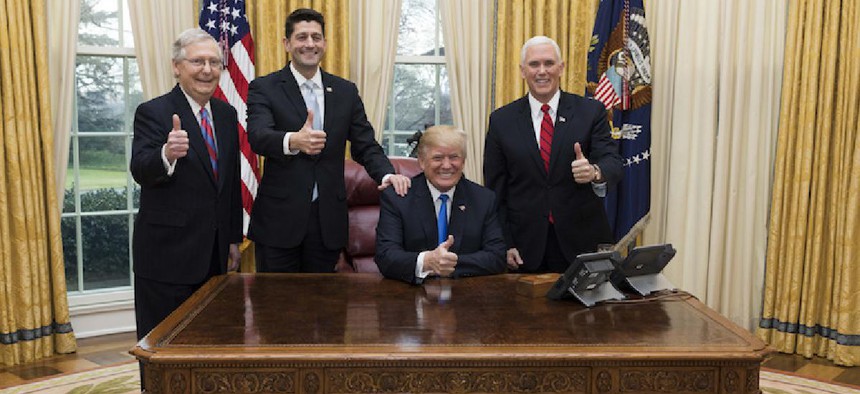That loud rumbling sound New Yorkers are hearing is the ground shifting beneath their feet.
The recently enacted federal package of tax cuts and increases does much more than increase the state’s outsized contribution to the federal treasury. It will fundamentally transform New York’s government and politics by undermining support for current school funding arrangements.
To provide a quality education to a population with many high-needs students, New York spends more per pupil than any other state – an average of more than $22,000 a year. This figure varies throughout the state and there is a lot of attention paid to disparities in school spending. Many school districts don’t have sufficient local resources and need state funds to pay for teachers, physical space and supplies.
Most education money comes from two separate taxes. The local share is usually paid mostly by property taxes, a particularly regressive tax that does not consider the taxpayers’ income or ability to pay. In most of the state outside New York City – which has low property taxes and an income tax – school property taxes are an enormous social and political problem.
The state steps in with its own funding on top of the local share, getting its money from the income tax, and distributing it through a formula that sends most of the money to poorer districts. A wealthier suburban district can get as little as 5-7 percent of its budget from the state. Poorer districts, most of them upstate, get 70-75 percent of their budgets from the state. New York City gets 40-50 percent of its budget from the state, largely because it is a wealthy district when compared to the statewide average.
RELATED: How the tax law could exacerbate NY's stagnant population growth
It’s not as complicated as it seems. The state redistributes income tax revenue to make up for disparities in wealth. Schools across the state function under the system. Taxpayers everywhere complain, but it has been a stable system. The regional impacts are clear. Generally speaking, New York City gets back in state dollars a little less than it sends to Albany in tax payments. Upstate gets an enormous subsidy provided by suburban taxpayers.
President Donald Trump has blown up that delicate balance. Measured across all state programs – not just education – New York City and the suburbs send billions of dollars to upstate communities. That system has been tolerated partially because it’s fair: State dollars are directed at communities that need the money for basic services, including schools, and partially because political leaders bargained their way into a sustainable compromise.
Enter Donald Trump. His tax reform legislation unravels a central economic premise of New York’s school funding system. Suburban taxpayers pay both high property taxes and high state income taxes, but they could deduct from their federal income taxes what they paid in state and local taxes. That deduction is now capped at $10,000, far less than the state and local taxes paid by many middle-class and affluent homeowners in New York City and its suburbs. So now many of those New Yorkers will see their total tax liability increase by thousands of dollars a year. New York, already the largest net donor among the states, will be sending an additional $14 billion per year to Washington.
This will undo the political bargain that has kept the current system afloat. Suburban taxpayers might be willing to absorb an additional burden if those dollars flowed to their home districts. Instead, slowly but surely, they will learn that their money is heading out of town and they won’t like it. That will inevitably erode public support for regional subsidies. A taxpayer revolt is coming.
RELATED: The tax law won't help New York clean up its act
To make matters more complicated, many upstate voters are under the false impression that they are subsidizing downstate, and many advocates for low-income communities in New York City already want to redirect more school funds from the suburbs to the city. The city as a whole isn’t poor, but it has large numbers of high-needs students – children from neighborhoods of concentrated poverty, special education students and English language learners – that drive up costs. As the Trump tax reform law and other Republican policies take more money from New York and cut more social spending, local government budgets will feel the squeeze. Upstate Republicans and New York City Democrats will both be looking to get more money for education from the same suburban taxpayers who are already taking a huge hit from Trump’s tax law.
The state government, especially Gov. Andrew Cuomo, will have to find a solution to this brewing problem. When this conflict will come to a head is uncertain, as it will take time for state voters and politiciansto make connections between their growing tax bill and the school aid debate. But it will happen, and the smart folks in Albany better start thinking about how best to respond to it.


